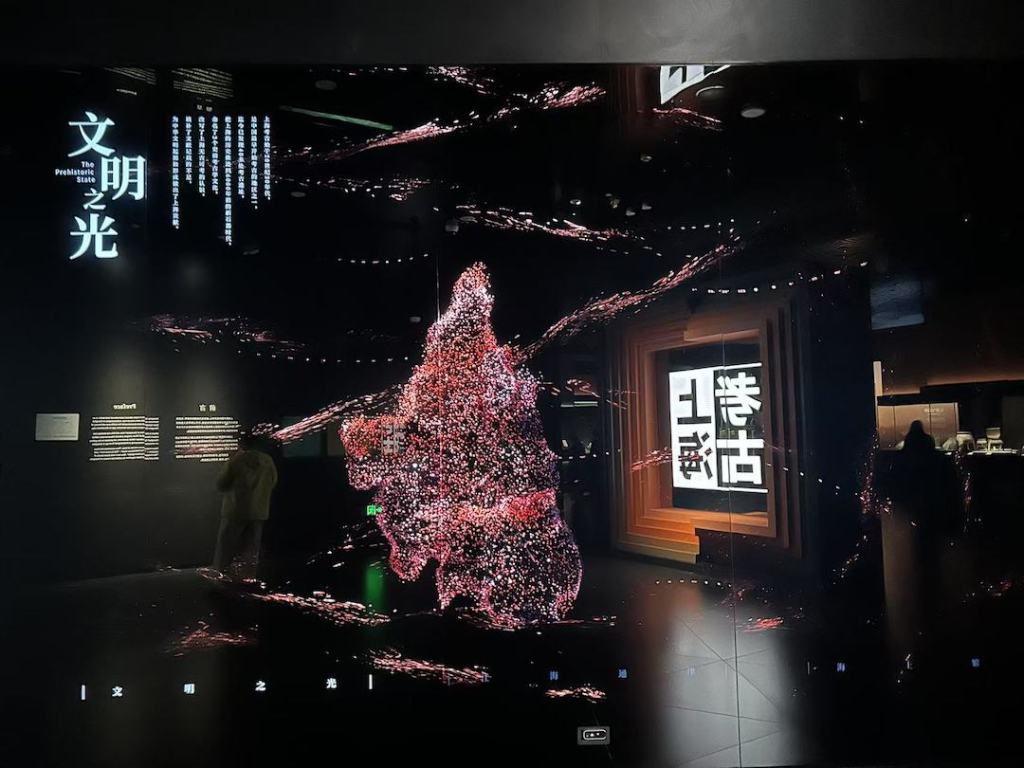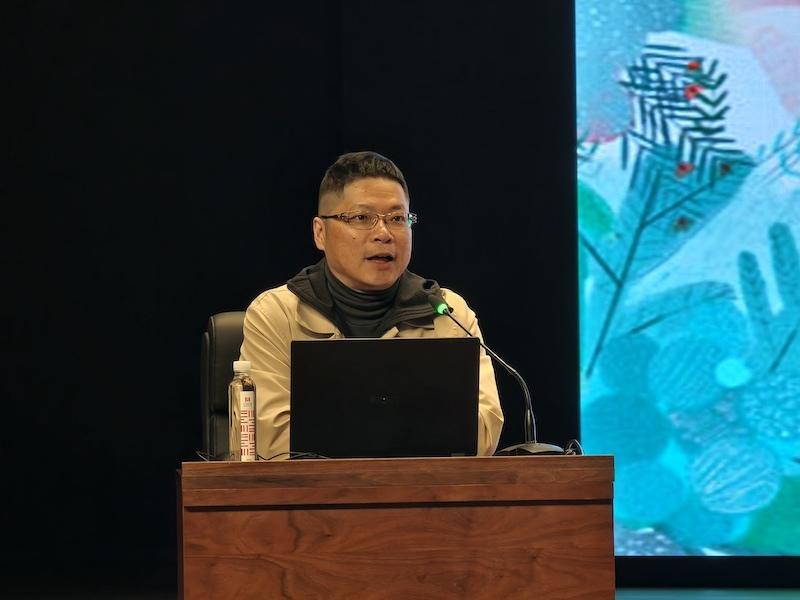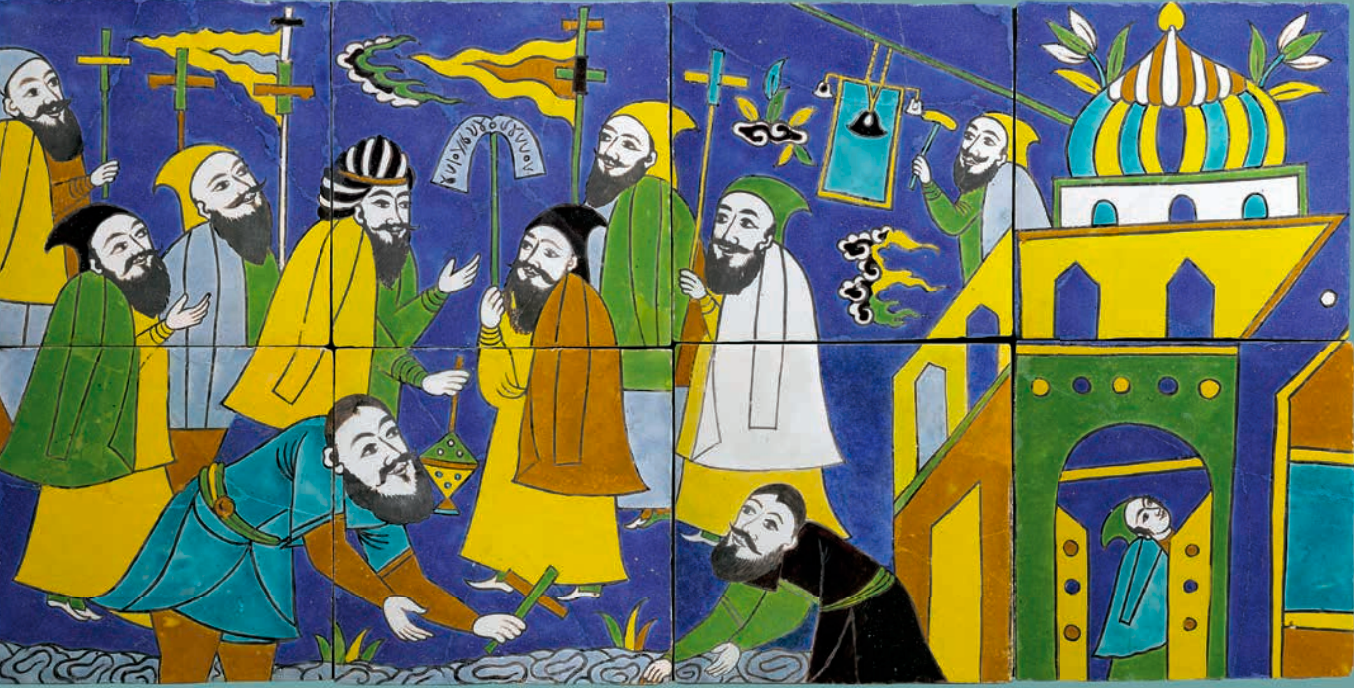
The pig pottery sculptures from the Majiabang culture, which prove that China had domesticated pigs as early as 6,000 years ago, the ivory scepter from the Liangzhu culture, which was made by splitting and grinding a whole ivory tusk and decorated with exquisite and intricately carved patterns all over, and the double-layer hollow petal-foot pottery pot from the Songze culture... These are a series of important exhibits in the "Archaeology·Shanghai" permanent exhibition of the East Hall of the Shanghai Museum.
The "Archaeology·Shanghai" pavilion is also the first permanent exhibition with Shanghai archaeology as its theme. Recently, the first lecture of the Shanghai Museum East Pavilion Tour Series was launched. Huang Xiang, Director of the Archaeology Department and Deputy Research Curator of the Shanghai Museum, gave a comprehensive introduction to the content of the "Archaeology·Shanghai" exhibition in the lecture, and revealed to the public more exhibition stories behind the East Pavilion Archaeology Pavilion and various details hidden in the exhibition hall. "There are three simulated skylights in our exhibition hall, and the protagonists are under them. They are the ivory scepter of Liangzhu culture (and its replica), the wooden ceremonial figurines unearthed from the tomb of Pan Yunzheng in the Ming Dynasty, and the copper jewel liner of the box inlaid with fortune, wealth, longevity and happiness in the Qing Dynasty. Seeing them is equivalent to seeing the essence of maritime archaeology."
The "Archaeology Shanghai" museum is located on the 4th floor of the East Building of the Shanghai Museum. The 1,000-square-meter exhibition hall is not large in the East Building, but it deserves the title of "unprecedented". This is also the first permanent archaeological exhibition of the Shanghai Museum. When the "Archaeology Shanghai" exhibition hall opened, it was frequently mentioned by visitors on social media because of its stunning visual effects and innovative design, attracting visitors to check in.

"Archaeology Shanghai" Exhibition Hall
Recently, the first lecture in the series of lectures on the tour of the Shanghai Museum's East Building was launched, focusing on the East Building's Archaeological Museum. Huang Xiang, director of the Archaeology Department and deputy research curator of the Shanghai Museum, gave a comprehensive introduction to the contents of the "Archaeology·Shanghai" exhibition, and revealed to the public more stories behind the exhibition of the East Hall Archaeology Museum and the various easter eggs hidden in the exhibition hall during the lecture.

Huang Xiang, Director of the Archaeology Department and Associate Researcher of the Shanghai Museum
“It helps us really understand the land beneath our feet”
Shanghai is one of the earliest regions in China to carry out archaeological work. Since 1935, a total of 43 pre-Qin sites have been discovered and 60 scientific archaeological excavations have been conducted, overturning the old perception that Shanghai has "no ancient history" and pushing Shanghai's history back to 6,000 years ago. There are three ancient cultures that have been named in Chinese archaeology - Songze Culture, Guangfulin Culture, and Maqiao Culture.

"Archaeology Shanghai" Exhibition Hall
"Although Shanghai has an uninterrupted history of 6,000 years, archaeological discoveries show that Shanghai's history still has peaks and troughs." Huang Xiang said that due to the preservation and protection of archaeological discoveries, it is impossible to sort out the 6,000-year history from morning to night. Therefore, the exhibition selected three historical fragments of Shanghai's prehistoric period, Tang and Song dynasties, and Ming and Qing dynasties. It is like a three-act play, corresponding to the three themes of the exhibition - "The Light of Civilization · Ancient Country", "Jianghai Tongjin · Ancient Port", and "Maritime Prosperity · Ancient Town" - narrating Shanghai's urban context and historical stories from an archaeological perspective.

The sand-proof flat-bottomed boat unearthed in Yangwan Village, Fengbang, Jiading during the Song Dynasty is the largest cultural relic in the exhibition hall.
The difference between an archaeological exhibition and a cultural relic art exhibition is that the cultural relics on display are not always complete, nor are they intended to highlight how exquisite the cultural relics are. They are more intended to reveal the methodology of archaeology and to salvage the historical context of the city with material evidence. Therefore, the content of "Archaeology·Shanghai" revolves around two main lines, one bright and one dark, which are intertwined. The bright line is to show the 6,000-year history of Shanghai, and the dark line is to popularize what archaeology is.

Domestic pig pottery sculpture Majiabang culture (6000 years ago) unearthed in 2004 from the No. 1 ditch of Songze site in Qingpu District

Double-layer hollow flower petal-footed pottery pot Songze culture (6000-5400 years ago) unearthed from the Siqian Village site in Qingpu District in 1966
Shanghai has a wealth of ancient cultural relics. In the "Archaeology Shanghai" permanent exhibition, visitors can see important cultural relics from major archaeological discoveries in Shanghai. For example, the "Light of Civilization" unit focuses on archaeological discoveries in Shanghai's prehistoric period. By displaying archaeological discoveries at the Songze Site, Fuquanshan Site, Guangfulin Site, and Maqiao Site, it reveals that 6,000 years ago, our ancestors began to live and develop in today's western Shanghai, and shows the shining light of ancient Chinese culture 5,000 years ago and the changes and reshaping of regional civilization 4,000 years ago.

Exhibition site Jade Cong with divine human and animal face patterns Liangzhu culture (5400-4300 years ago) unearthed from Tomb 204 of Wujiachang Cemetery at Fuquanshan Site, Qingpu District in 2008
The "Jianghai Tongjin" unit is the most valuable section, as it brings together two of Shanghai's top ten archaeological discoveries in China, the "Qinglong Town Site" and the "Yuan Dynasty Water Gate Site". The "Qinglong Town Ruins" from the Tang and Song Dynasties confirmed the historical records of this important commercial port during the Tang and Song Dynasties. The history of Shanghai's prosperity due to water began from this time; the excavation results of the Zhidanyuan Yuan Dynasty Water Gate and other sites supplemented many historical details of the changes in the water system, water conservancy construction and shipping development in the Shanghai area during the Yuan and Ming Dynasties. This section also incorporates the latest archaeological discoveries of the "Yangtze River Estuary No. 2 Ancient Ship" and reproduces the prosperous scene of the port city of Shanghai in the Qing Dynasty by exhibiting porcelain salvaged from the water.

Relics, bronze bottles and Ashoka stupa unearthed from the Qinglongzhen site

The latest archaeological discoveries of the "Changjiang Estuary No. 2 Ancient Ship" on display
Entering the Ming and Qing Dynasties, the "Maritime Prosperity" unit focuses on the relationship between Shanghai's three major families and Shanghai's landmarks, and unfolds the narrative from "Yu Garden and the Pan Family", "Lujiazui and the Lu Family", and "Shanghai City and the Gu Family", presenting Shanghai's urban changes and the worldly side of the urban citizen class.
For some Shanghai audiences, they love the "Archaeology Shanghai" Museum because it can help them truly understand the land they live on. "If you don't look at the cultural relics, just looking at the place names on the display boards makes people feel very familiar," one audience member told The Paper.
Huang Xiang still remembers that when he was a child, he visited the "Ancient Corpse Museum" of the Old Shanghai Natural History Museum. He was amazed at the time. Later, after engaging in archaeological work, he learned that the pair of ancient corpses exhibited in the Old Shanghai Natural History Museum were the remains of Gu Congli and his wife. "The archaeological museum now exhibits the cultural relics unearthed from the Gu family tombs. Isn't this also a link across time and space?"

Gilded silver inlaid with gemstones and white jade with bird and peony pattern cape pendant Ming Dynasty (1368-1644) Unearthed from the tomb of Mrs. Gu Dongchuan in Dapuqiao, Huangpu District in 1993
As a senior cultural and museum enthusiast, Mr. He has visited the "Archaeology·Shanghai" Hall more than 20 times since the opening of the East Hall. In his eyes, the newly established "Archaeology·Shanghai" Hall and "Shanghai Painting and Calligraphy" Hall in the Shanghai Museum East Hall are two exhibition halls representing Shanghai's regional culture, and they are also the two exhibition halls he loves the most. "One represents Shanghai's 6,000-year history of civilization, and the other represents Shanghai's millennium cultural context. Moreover, they are new exhibition halls that were not available in the old hall, and the content is very novel." Mr. He said, "Whenever my friends from other places come to Shanghai, I will take them to see these two exhibition halls, because they can only represent Shanghai."
Jade bi with inscriptions, Eye of Power, what other Easter eggs are hidden in the archaeological museum?
During the lecture, Huang Xiang revealed to the public more stories behind the exhibition of the East Hall Archaeological Museum and revealed the Easter eggs hidden everywhere in the exhibition hall.
A display case showing a group of jade bi disks was crowded with spectators. Some were trying to get their heads close to look until they touched the glass, some were holding up telescopes to observe the "bi disks", and some were taking out their mobile phones to zoom in, out, and then zoom in again to take pictures of the jade bi disks. It is said that there is a faint carved symbol on one side of the Liangzhu culture jade bi in the middle, which looks like a paper-folded flying bird. Curious viewers came over to look for it, but trying to see the hair-thin carvings on the surface covered with lines and patina is not only a test of eyesight, but also of imagination. Some viewers used a variety of "tools" to finally find the engraving, and enthusiastically reminded that it was at the "12 o'clock" direction.
Many Liangzhu jade bi with engraved characters have been discovered so far, most of which are handed down from generation to generation, and very few are obtained through archaeological excavations. This jade bi is also rare.

Visitors use a telescope to observe the carved symbols on the Liangzhu culture jade bi

Carved jade bi Liangzhu culture (5400-4300 years ago) unearthed in 1984 from Tomb No. 40 of the Fuquanshan Cemetery in the Fuquanshan Site in Qingpu District

The carved symbols on the jade bi
In the "C position" area of "Light of Civilization", there is an ivory scepter from the Liangzhu culture unearthed from the Fuquanshan site in Qingpu District in 2010. It once amazed the audience at the Shanghai Museum's "Why China" series of exhibitions "Empirical China: Songze and Liangzhu Civilization Archaeological Special Exhibition" and is now placed here. The original cultural relics are placed flat on the exhibition stand, and 1:1 replicas are stood up to restore the scene when they were used. The two exhibits form an elliptical line, which just frames the group of jade disks at the back, resembling an "eye". This seemingly coincidental but in fact ingenious "visual re-creation" is vividly called the "Eye of Power", echoing the connotation of kingship and majesty.

The original and replica of the Liangzhu culture ivory scepter and the jade disk in the display cabinet behind form the "Eye of Power"

Exhibition View
In order to try to show the historical details that are rare but do exist in the museum, the museum and the design team carefully created a huge "porcelain installation wall" consisting of 3 layers and a total of 686 Song Dynasty porcelain bowls. These porcelains were selected from 1,046 complete porcelain bowls unearthed in Shituan Township, Fengxian District in 1977. They are fixed with brackets and claws. From the front, they look like a row of rolling waves, echoing the theme of "Jianghai Tongjin" of this section. When viewed from the side, the glass will reflect the entire display case, forming a symmetrical space.

The "art installation" consists of 3 layers of 686 Song Dynasty porcelain bowls
The process of making such a porcelain wall is quite difficult. "We first used literature to demonstrate the aesthetics of dense display. Then we surveyed, beautified, screened, and lined up more than 1,000 pieces of porcelain. We designed brackets and grippers and installed them layer by layer. Most importantly, we ensured the safety of the cultural relics and did not damage them," Huang Xiang revealed.
"In fact, we were very hesitant when making this installation, because from the perspective of the beauty of the objects themselves, these porcelain plates are very ordinary, but when they are displayed in a matrix of a certain scale, they can present a very good visual impact."

Exhibition View
The "Porcelain Bowl Installation Wall" is now a "scenery" in the archaeological museum and a must-see camera position for visitors. Its visual appearance is also reminiscent of the display of Changsha kiln porcelain in the Black Stone Shipwreck Exhibition Hall in the Asian Civilisations Museum in Singapore, which is similar in nature.

A group of wooden ceremonial figurines unearthed from Pan Yunzheng's tomb in the Ming Dynasty
During the lecture, Huang Xiang also pointed out a shortcut for those viewers who were passing through the city in a hurry and did not have time to take a closer look. That is to follow the "skylight" to find the protagonists of "Archaeology Shanghai". "There are three simulated skylights in our exhibition hall, and underneath them are the main objects, which are the ivory scepter (and its replica) of the Liangzhu culture, the wooden ceremonial figurines unearthed from the tomb of Pan Yunzheng in the Ming Dynasty, and the bronze jewel liner of the box inlaid with fortune, wealth, longevity and happiness in the Qing Dynasty. Seeing them is like seeing the essence of the maritime archaeological exhibition."


